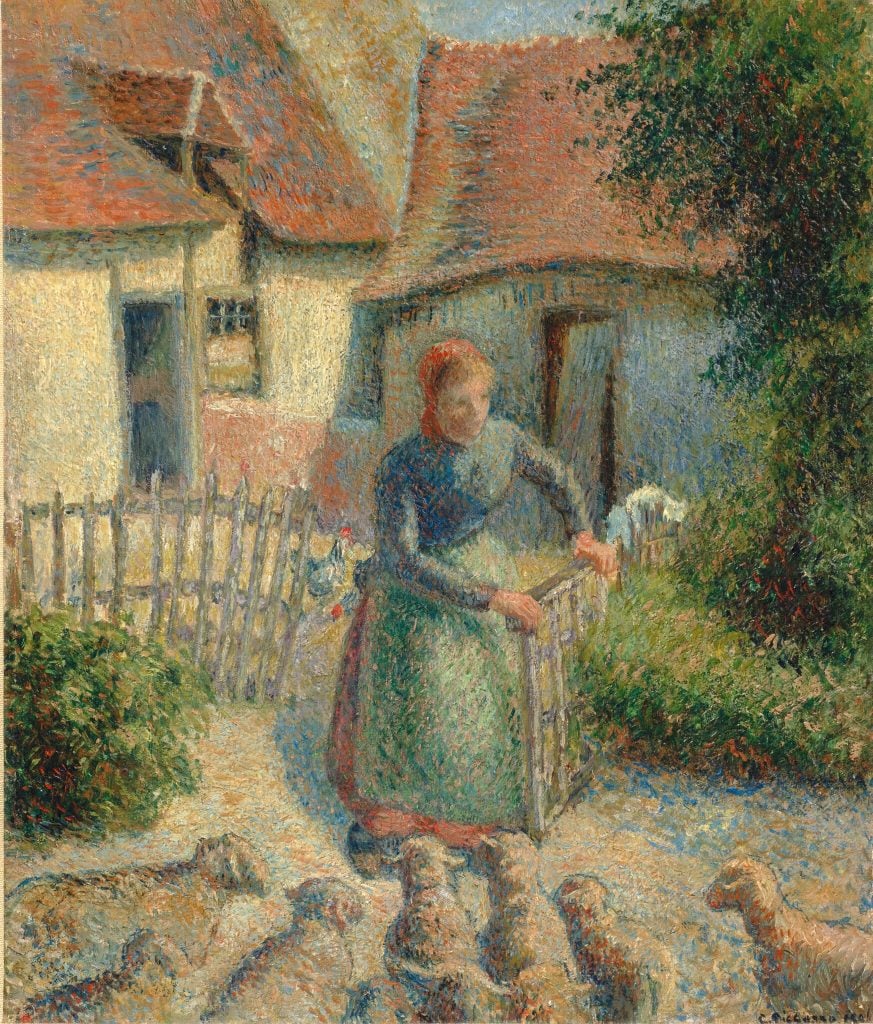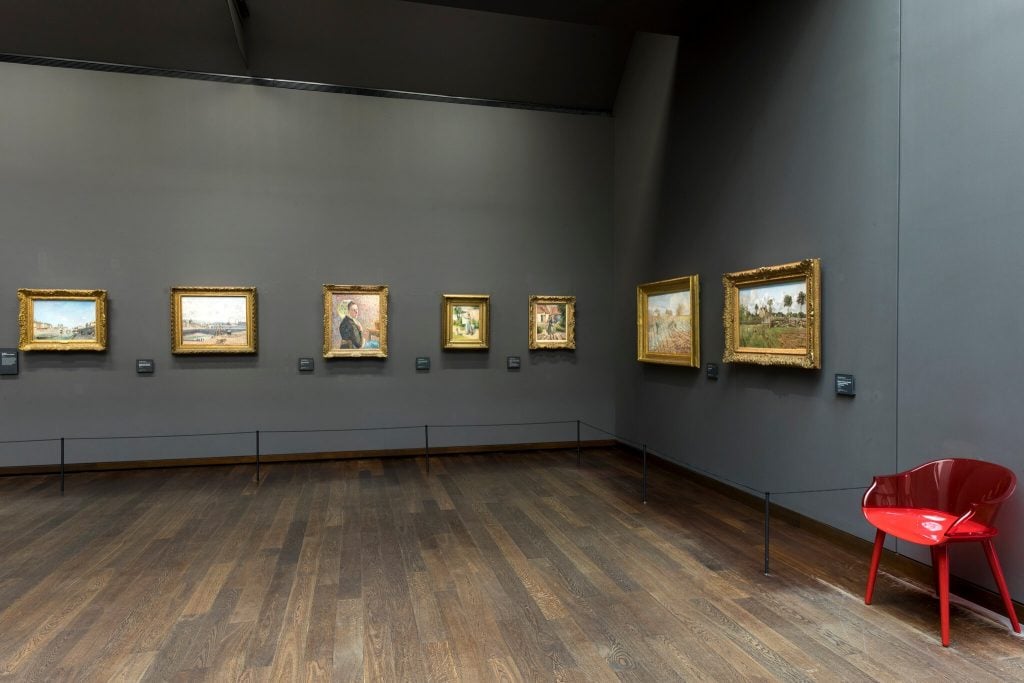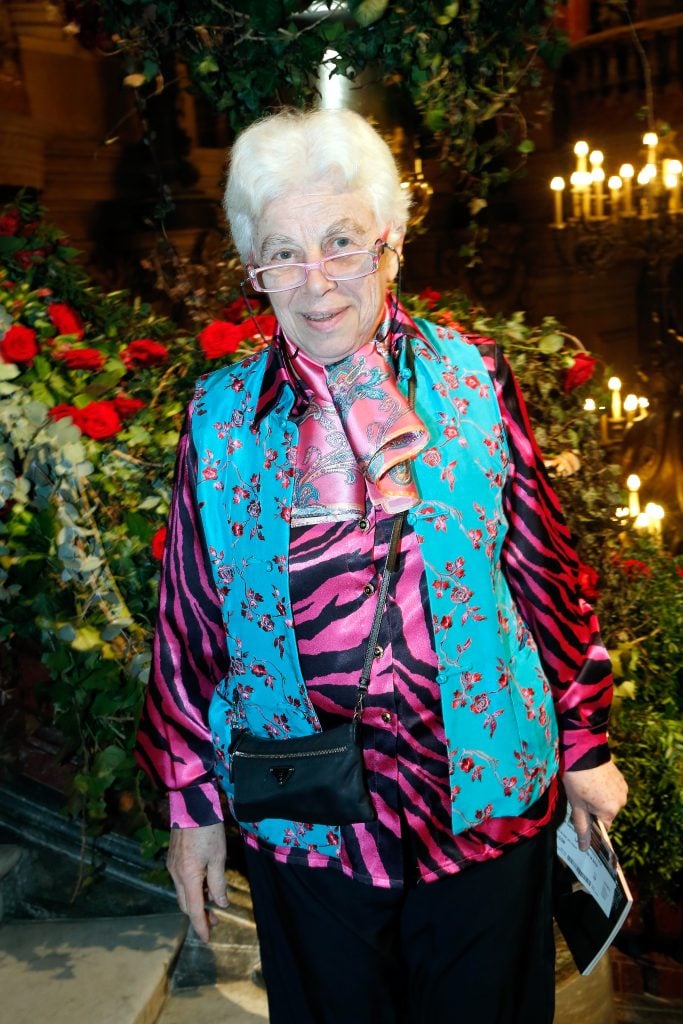Law & Politics
‘I Have No Other Choice’: Holocaust Survivor Relinquishes Her Claim to a Looted Camille Pissarro Painting
The painting was stolen by the Nazis in 1941.

The painting was stolen by the Nazis in 1941.

Sarah Cascone

Eighty years after Nazis stole La Bergère Rentrant des Moutons (Shepherdess Bringing in Sheep), a Camille Pissarro painting, from the parents of Léone Meyer, the Holocaust survivor has given up her quest for the work’s restitution.
The 81-year-old has transferred ownership of the painting to the University of Oklahoma Foundation, which has agreed to donate it to a French institution or the U.S. Art in Embassies program so that it can be shown on a rotating basis in both France and the school’s Fred Jones Jr. Museum of Art.
Meyer had fought for close a decade to recover the painting, stolen from her adoptive parents’s French bank vault by the Nazis after the couple fled the country.
The university promised in a statement that it “do[es] not intend for the OU Foundation to retain title to the painting long-term.” When the canvas returns to the States this fall, it will go on view alongside a plaque that reveals its troubled history and clouded provenance.

Camille Pissarro, La Bergère Rentrant des Moutons (Shepherdess Bringing in Sheep), 1886, as seen at the Musée d’Orsay, third from right. Photo by Sophie Crépy, courtesy of the Musée d’Orsay.
“The University of Oklahoma has now obtained full title to the painting,” Meyer’s lawyer, Ron Soffer, told Artnet News in an email. “As far as Mrs. Meyer is concerned, they are free to do with it as they please.”
But for Meyer, the conclusion of the legal saga does not feel like a victory. “I have no other choice,” Meyer said in a statement of her decision to relinquish ownership of the painting. “I was heard but not listened to.”
Her father’s attempts to reclaim the painting during the 1950s failed due to the statute of limitations—oil baron Aaron Weitzenhoffer and his wife Clara were declared its rightful owners, having purchased the canvas in good faith. They donated it to the Fred Jones Jr. Museum in 2000.
By the time Meyer tracked the painting down a dozen years later, public opinion and policy had evolved; nations around the world recognized the importance of restituting artworks and other valuables looted by the Nazis, regardless of how much time had passed.
After a three-year legal dispute, Meyer and the university reached a settlement in 2016. The school agreed to transfer ownership of the painting to Meyer, who was recognized as its rightful owner. She would donate it to the French institution of her choice, and it would split time between the two museums, crossing the Atlantic every three years after an initial five-year run in France.
Meyer—the ninth-richest woman in France, according to the Guardian—wanted to donate the work to the Musée d’Orsay in Paris, where it is currently on view. But when the time for its return to Oklahoma, scheduled for this July, began to approach, the French museum got cold feet. Citing the insurance nightmares and potential physical risk inherent in a perpetual loan agreement, the Musée d’Orsay refused Meyer’s gift, placing the painting back in legal limbo.

Léone Meyer in 2015. Photo by Bertrand Rindoff Petroff/Getty Images.
“During all this time I secretly hoped that the Oklahoma University foundation would proudly agree to make this donation with me so that the museum would accept it without any reservations,” Meyer said. When that dream failed to materialize, she returned to court to try and overturn the settlement, claiming she had been pressured into accepting the terms of the 2016 deal.
Meyer’s lawyer made the case the settlement was invalidated due to a 1945 French law stating that “no possessor can prevail against the legitimate owner of a work stolen by the Nazis.” He also argued that the Holocaust Expropriated Art Recovery Act, passed in 2016 (after the settlement was finalized), would have benefited Meyer’s restitution efforts.
Meyer’s case was met with major setbacks on both sides of the Atlantic. An Oklahoma judge fined her $3.65 million ($2,500 a day until the she dropped legal action) for breaching the terms of the agreement, and a French court ruled last month that the Oklahoma legal system had jurisdiction over the settlement, not France.
“Some will regret this perpetual rotation and others will celebrate it,” Meyer said. “But the students of the of the University of Oklahoma will remember that this work belonged to Yvonne and Raoul Meyer and that it was pillaged by the Nazis in France in 1941.”